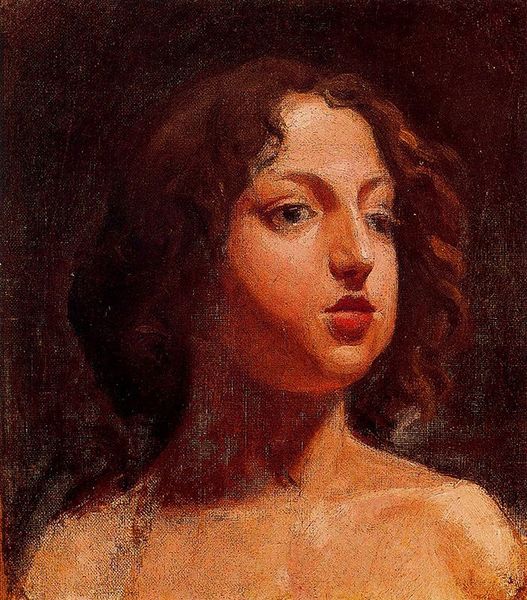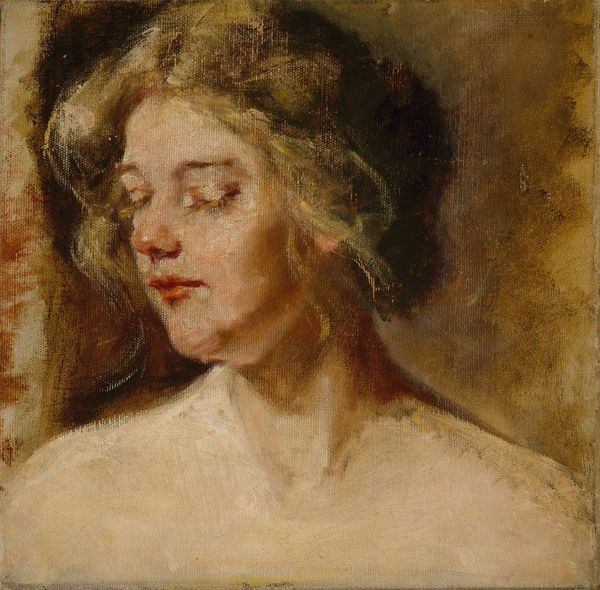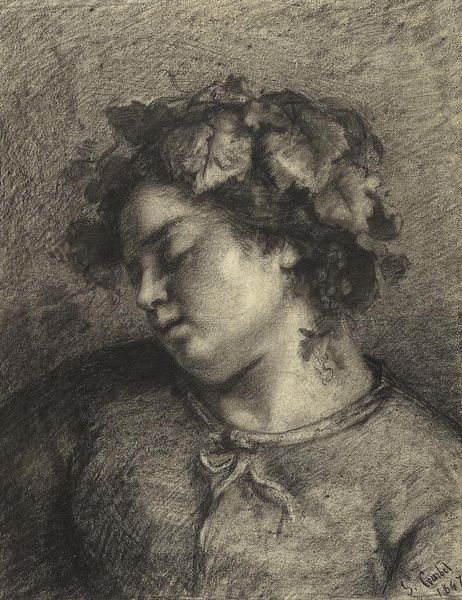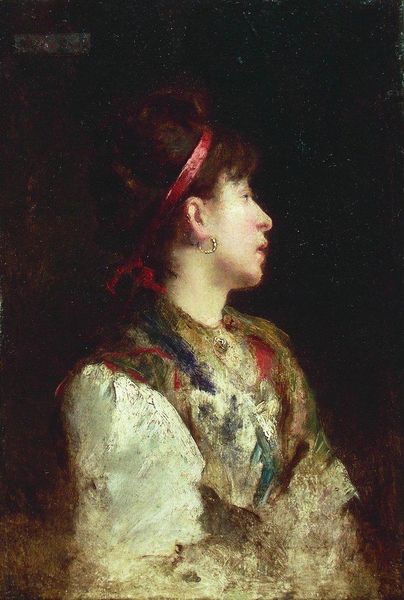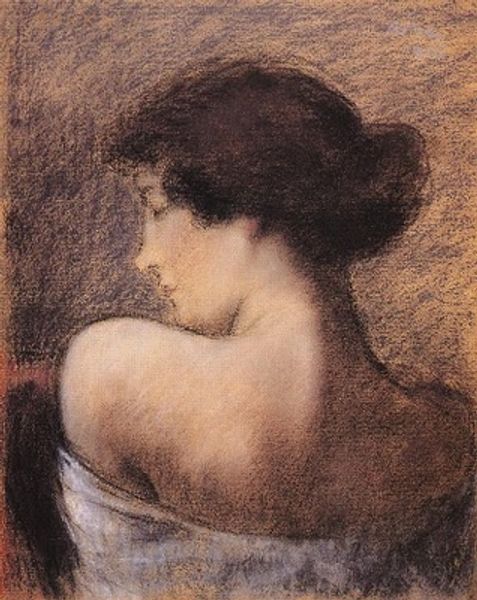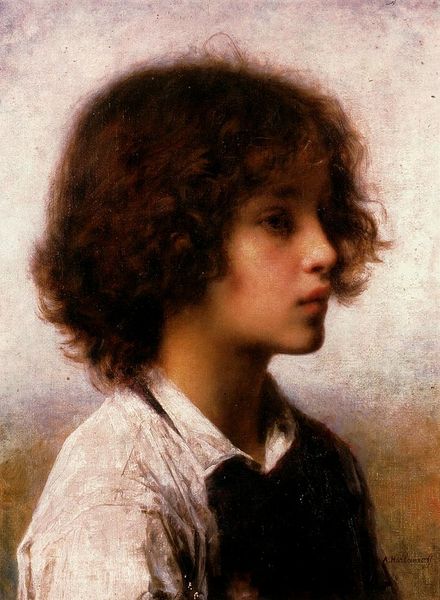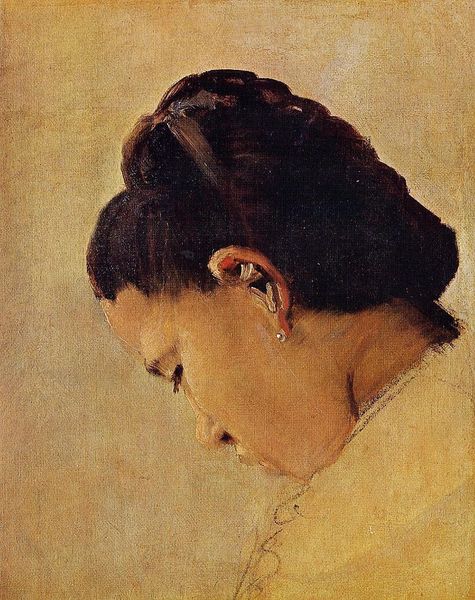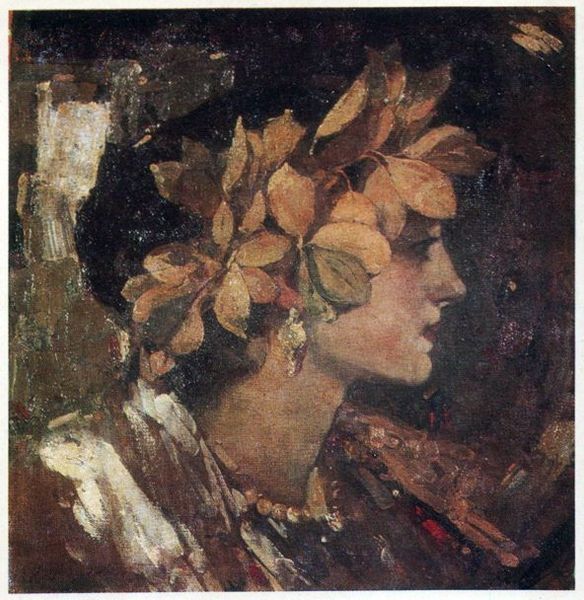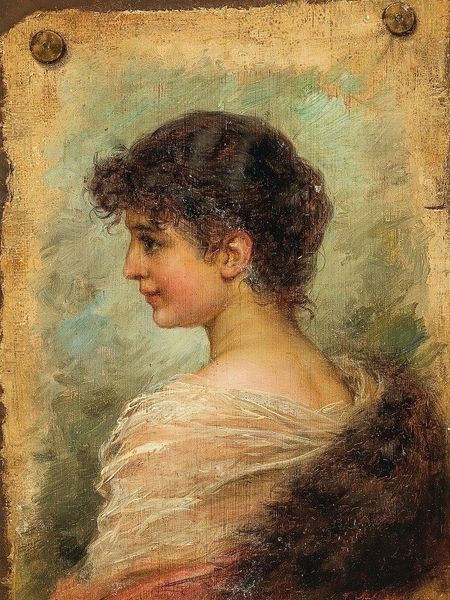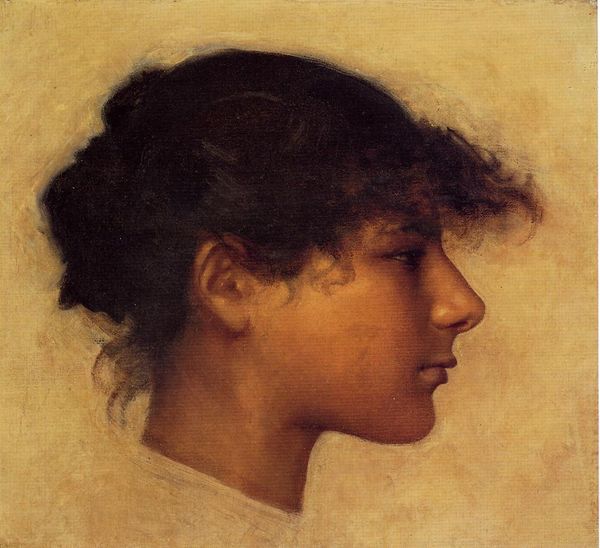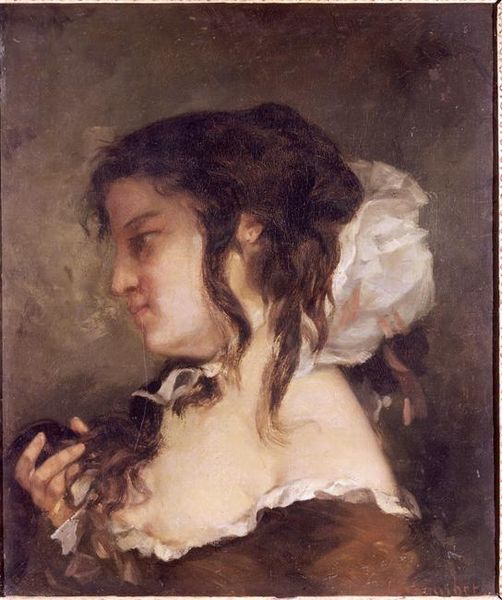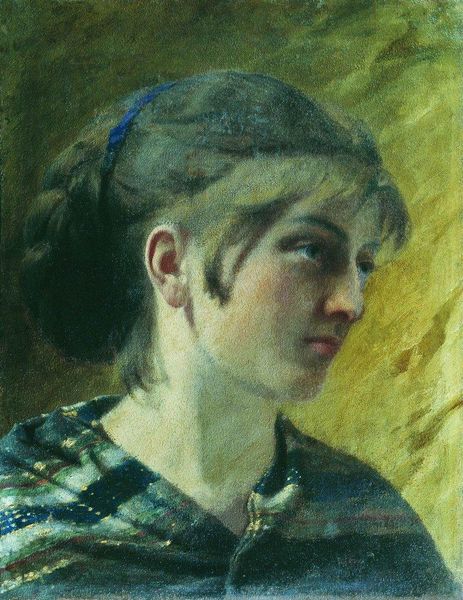
drawing, oil-paint, charcoal
#
portrait
#
drawing
#
self-portrait
#
baroque
#
head
#
oil-paint
#
charcoal drawing
#
charcoal art
#
oil painting
#
roman-mythology
#
mythology
#
portrait drawing
#
charcoal
#
italian-renaissance
Dimensions: 36.3 x 25.2 cm
Copyright: Public domain
Curator: Here we have Diego Velázquez's "Study for the Head of Apollo," dating to about 1630. It’s currently held in a private collection, and the medium appears to be primarily oil paint, with possible use of charcoal in underdrawing. Editor: Immediately, I'm struck by the profile view and the limited palette. It conveys such a classical austerity. Is there something about that artistic choice we should consider? Curator: Absolutely. Velázquez created this work in a period of significant cultural and political upheaval in Spain. The choice to depict Apollo, a Greco-Roman deity associated with reason and order, might reflect a yearning for stability. The work exists, you might say, in relationship to anxieties present in the artist's world. Editor: That is thought-provoking, given the use of laurel leaves. In many eras and societies, these have signified victory and authority. Considering that Velázquez held a position as court painter to Philip IV, is it reasonable to assume this symbolizes royal power as well as representing the mythic figure of Apollo? Curator: The layering of those significations feels absolutely deliberate. Power and status were carefully curated through image making during this time, especially with portraiture and its relationship to notions of ideal beauty. The intersection of art, politics, and identity is incredibly present. Editor: I also detect an element of idealized masculinity here, presented almost as a modern archetype. Does this potentially challenge our perceptions, given current debates about male representation? Curator: Definitely. Examining historical works with modern lenses is critical. This image allows for conversation about beauty standards, power dynamics, and the portrayal of masculinity, highlighting how artistic ideals interact with—and sometimes challenge—contemporary values. Editor: Understanding the visual vocabulary, considering cultural memory, really enriches my perception. Curator: I think interrogating an image through its history, in light of contemporary social and political forces, provides invaluable insight.
Comments
No comments
Be the first to comment and join the conversation on the ultimate creative platform.
